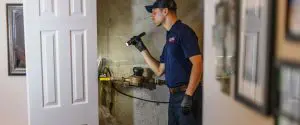
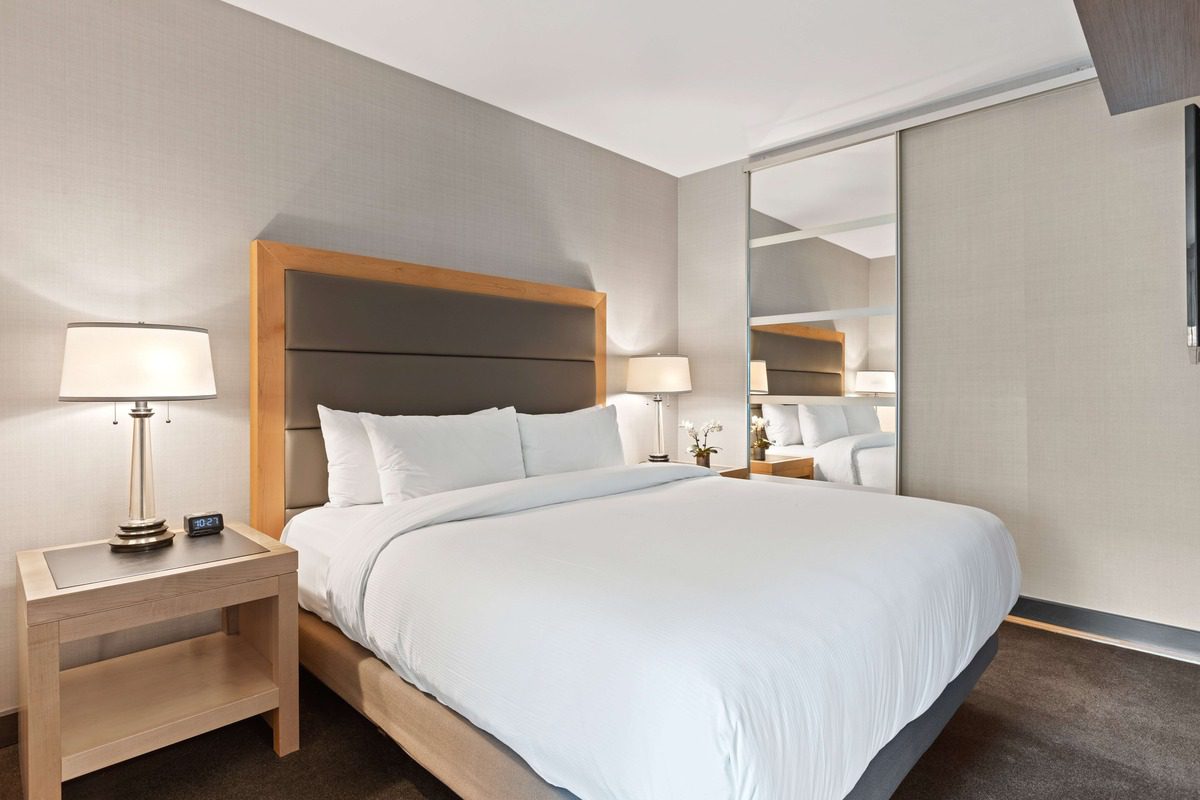
Are you a hotel owner or manager looking to learn more about the pesky pests that can make their way into your property? Are you a frequent traveler in need of valuable insights about pests lurking within hotels? Look no further, as we're here to equip you with the knowledge you seek. With over 30 years of experience in the pest control industry, we provide you with comprehensive insight into the pesky pests that can potentially affect your hotel or your hotel stay.
Have a specific question? Jump to the answer:
Hotel businesses and pests in NJ
Hotel businesses and pests in Florida
What are the common hotel pests?
Where can I find bed bugs in hotels?
Are bed bugs dangerous for humans?
Which US states have the most cases of bed bugs in hotels?
Bed Bug Bites and Infestation Prevention
What's the best way to prevent a bed bug infestation in a hotel?
Does my hotel have a bed bug infestation?
How do I get rid of a bed bug infestation?
Bed Bug prevention tips for hotel guests
How to avoid bed bugs in hotels
Expert Pest Control for Hotels
Working with a pest control company
Hotels and Pests
Why do hotels attract pests?
Hotels serve as a temporary home for numerous travelers seeking comfort, relaxation, escape and sometimes just convenience. Despite their efforts to maintain cleanliness, hotels can sometimes fall victim to unwelcome guests - pests. The presence of pests in a hotel is of great concern, quickly tarnishing a hotel's reputation and damaging a guest's stay. There are some common factors that attract pests to hotels.
- Food and waste management: One of the primary reasons why pests are attracted to hotels is of course, the vast availability of food sources. As hotels provide an array of food options, from room service to in-house restaurants and buffets, food is readily available and stored throughout the premises. With this in mind, improper food storage and waste management can inadvertently invite pests into the premises. Therefore, establishing food handling and waste management protocols is vital to keeping the pesky pests away.
- Building structure and maintenance: The building structure and maintenance of hotels also contribute to pest problems. Small cracks and gaps in walls, windows, doors, and plumbing provide easy entry points for pests. Bed bugs, flies, and spiders can easily infiltrate hotel rooms through these openings, affecting guest experience. Regular maintenance, including sealing gaps, repairing windows and doors, and addressing plumbing leaks, is necessary to minimize the risk of pest infiltration.
- Housekeeping practices: Housekeeping and cleaning practices play a pivotal role in preventing pests from infesting hotels. Neglected areas and inadequate cleanliness can attract creepy crawlies and rodents. Regular deep cleaning, focusing on overlooked areas, and offering proper training for housekeeping is essential in eliminating potential pest habitats.
By implementing proper protocols, regular maintenance, effective housekeeping, and preventive measures, hotels can significantly reduce the risk of pest infestations and maintain a pleasant environment for their guests.
Hotel businesses and pests in NJ
The hotel industry in New Jersey thrives due to the state's appeal to both tourists and business travelers. With its proximity to major cities, beautiful coastline, and diverse attractions, New Jersey offers a wide range of accommodations for visitors. However, like hotels in other regions, those in New Jersey face pest-related challenges. Common pests that hotels struggle with in the state include bed bugs and cockroaches. Bed bugs are a significant concern for hotels worldwide, and most certainly those in New Jersey. These tiny insects can infest hotel rooms by simply hitchhiking on luggage and clothing. Cockroaches are also a concern in the Garden State especially theGerman cockroach and American cockroach. These roaches are attracted to New Jersey due to the state's warm and humid climate, and hotels provide an ideal environment for these pests thanks to the abundance of food sources. In order to address these pest challenges, hotels in New Jersey employ preventive measures such as regular inspections, proper sanitation practices, and professional pest control services. By proactively managing pest infestations, hotels strive to provide a clean and comfortable experience for their guests.
Hotel businesses and pests in Florida
The hotel industry in Florida is a significant sector due to the state's popularity as a tourist destination, providing a range of accommodations from luxury resorts to budget-friendly options. However, the warm climate and unique weather conditions in Florida pose challenges when it comes to pest management for hotels. Common pests that hotels in Florida struggle with include bed bugs, rodents, cockroaches, and termites. The heat and humidity in the Sunshine State create an environment conducive to the survival and proliferation of these pests. The state's coastal location and subtropical climate also provide an attractive habitat for pests. Hotels in Florida need to invest in rigorous pest control measures, including regular inspections, proactive maintenance, and pest management programs, to ensure a comfortable and pest-free experience for their guests.
What are common hotel pests?
Cockroaches, rodents and bed bugs are prevalent pests encountered in hotels. The combination of factors such as easy access to food, high guest turnover, easy access to food and insufficient preventive measures contributes to an environment where hotels face an elevated risk of attracting infestations.
Cockroaches and hotels
Cockroaches are notorious pests that can thrive in hotel environments. They are attracted to the abundant food sources available, ranging from leftovers and crumbs in kitchens and dining areas to unattended spills in guest rooms. Furthermore, the warm and humid conditions of many hotels create an ideal breeding ground for cockroaches.
To combat cockroach infestations, hotels must work with professional pest control companies. Pest control experts employ effective treatment methods such as integrated pest management and thorough inspections to identify and eliminate cockroach nests. Regular monitoring and preventive measures such as sealing cracks and crevices, implementing proper waste management, and educating housekeeping on cockroach prevention techniques are essential for long-term cockroach and pest control.
Rodents and hotels
Rodents, including mice and rats, can quickly infiltrate hotels through small openings. This is because hotels offer shelter, food, and water sources, attracting these furry critters. Once inside, rodents can cause extensive damage to property, contaminate food supplies, and transmit diseases.
Hotels need to partner with expert pest control companies to employ various tactics such as exclusion methods to eradicate existing infestations and prevent future rodent access. Regular inspections of structural vulnerabilities, effective waste management practices, and employee training on early detection signs are vital for successful rodent control in hotels.
Bed Bugs and hotels
In recent years, bed bug infestations in hotels have witnessed a notable rise, causing distress to both guests and hotel management. These miniscule and highly resilient pests can easily hitch a ride on luggage, clothing, or furniture, allowing them to spread rapidly within a hotel space. Bed bugs hide in mattresses, furniture upholstery, and cracks, emerging at night to feed on sleeping guests.
The resurgence of bed bugs emphasizes the importance of proactive measures by hotels. Collaboration with pest control companies is crucial to eliminate existing infestations through specialized treatment methods like heat treatments, insecticide application, and thorough room inspections.
Let’s take a look at some bed bug basics to inform hotel owners and managers as well as guests - to ensure a bed bug free environment.
Bed Bugs Basics
Bed bugs rank among the prevalent pests found in hotels. These unwelcome creatures are so miniscule that they can be challenging to spot, further complicating detection efforts. While guest rooms serve as the primary haven for bed bugs, it's important to note that dining areas, bars, and lounges can also fall victim to infestations, posing potential health risks to both staff and guests. Vigilance in addressing this issue is crucial to safeguarding the well-being of everyone involved.
What are bed bugs?
Bed bugs are blood-sucking ectoparasites, akin to head lice (Pediculus humanus capitis), belonging to a category of pests that feed on human blood. While bed bugs are not recognized as disease transmitters, they remain a notable public health concern. These tiny pests can have significant effects on both physical and mental health. Allergic reactions to their bites can cause discomfort, while secondary infections may occur due to scratching. Additionally, bed bug infestations can have profound psychological impacts, leading to anxiety, insomnia, and systemic reactions. With this in mind, it is crucial to address and mitigate these issues to ensure the well-being of individuals affected by these pests.
What do bed bugs look like?
Bed bugs are tiny pests that possess several distinctive characteristics. They are small, oval-shaped insects with a brown hue, and they sustain themselves by feeding on the blood of humans and animals. Adult bed bugs have flattened bodies, similar in size to that of an apple seed. However, after a satisfying meal, they undergo a significant and noticeable transformation, becoming swollen and turning a more reddish color.
Their flat bodies allow them to squeeze into miniscule spaces and this flexibility grants them access to virtually any location where a blood source is available. They also congregate in groups, seeking refuge is a concealed hideout. Although they lack the ability to fly, they possess remarkable agility, traversing floors, walls, and ceilings with remarkable speed.
Female bed bugs are prolific egg-layers, capable of depositing hundreds of eggs throughout their lifetime. Each individual egg is minute, comparable to a speck of dust. As they develop, immature bed bugs, known as nymphs, shed their exoskeletons five times prior to reaching maturity. Blood meals are a prerequisite before each shedding occurrence. In ideal conditions, bedbugs can complete their life cycle in as little as a month and produce three or more generations within a year. Their lifespan ranges from approximately 10 months to one year.
What attracts bed bugs?
These persistent pests are lured to locations by the body heat and carbon dioxide emitted by warm-blooded animals and humans. During sleep, when we remain relatively motionless, our exhaled carbon dioxide envelops our heads, making it a prime target for bed bug bites. Although they may also bite other exposed areas of the body, the head and neck tend to be their preferred feeding spots.
Bed bugs are adept at detecting the warmth and moisture emanating from our bodies, even from a distance of up to 3 feet. As they lack the ability to jump or fly, they must remain in close proximity to their source of nourishment. Consequently, they tend to congregate in and around beds, positioning themselves to feed while their unsuspecting host slumbers.
The keen sense of heat enables bed bugs to identify the proximity of a potential meal. The Centers for Disease Control and Prevention (CDC) indicates that bed bugs generally remain within an 8-foot radius of a sleeping human host. However, it is worth noting that some bed bugs have been documented to travel up to 100 feet during the night in search of a blood meal.
The combination of our body warmth, exhaled carbon dioxide, and the relative stillness during sleep creates an ideal environment that bed bugs find irresistible. Thus, hotels become particularly susceptible to infestations, as they provide a multitude of potential hosts for these opportunistic insects.
Where can I find bed bugs in a hotel?
Bed bugs can be found in various areas of hotels, and are certainly not solely confined to beds. While beds are a common hiding spot (as their name suggests), these resilient and miniscule pests also reside in several other locations within hotel rooms, including:
- Mattresses and box springs: Take a look at the seams and crevices of mattresses as well as box springs. This is because tiny bed bugs often seek refuge in these small and often overlooked areas.
- Furniture: Always pay attention to upholstered furniture as bed bugs are able to effortlessly hide between seams.
- Headboards: As bed bugs are attracted to carbon dioxide, the headboard is the ideal location for them to make a home. The closer to your head - the better. Check behind and in the seams of a headboard if it has been upholstered.
- Nightstands and dressers: Make sure to check in your cupboards for any of these tiny bugs as they will happily make a home where you keep your clothes.
- Curtains and drapes: Bed bugs love hiding and they are able to easily conceal themselves in the folds of drapes - so give hotel curtains and drapes a once or twice or even three times-over.
- Electrical outlets: As bed bugs are experts at squeezing into tight spaces, they can quickly get into electrical outlets and wall sockets.
- Wall decorations: These pesky pests will seek refuge close to your bed, so any wall decorations that conceal them make for a great hiding spot. Make sure to check any wall art that decorates the space.
- Luggage and luggage racks: If bed bugs have entered the hotel through luggage, they may make a home close to the luggage rack so make sure to do a thorough sweep.
- Baseboards and molding: Bed bugs are attracted to gaps and cracks so moldings and baseboards make an excellent home base.
- Carpet and flooring seams: Bed bugs will make a home along the edges of carpets and flooring as it's easy for them to navigate through these small areas and make their way to guests.
Bed bugs are skilled at hiding in tight spaces close to their human hosts, ensuring easy access to blood meals during the night. By conducting a comprehensive inspection of these various areas, you’ll be able to identify any potential bed bug infestations.
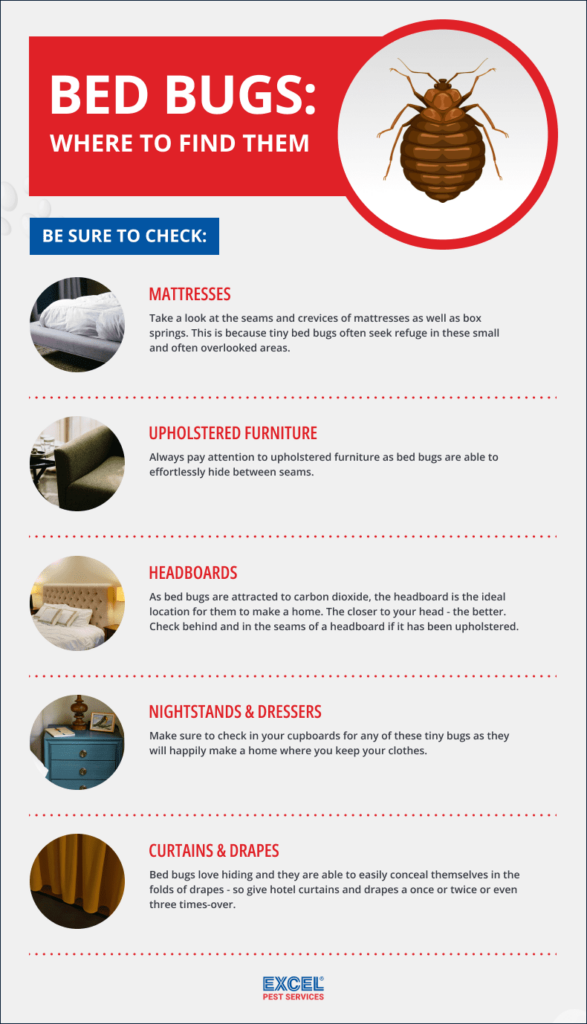
Are bed bugs dangerous for humans?
Bed bugs are not known for transmitting diseases, but their presence can be quite bothersome and traumatic. The primary inconvenience arises from the itching sensation their bites cause, leading to potential sleep disturbances. Excessive scratching of the affected areas due to itching can also escalate the risk of secondary skin infections. It is also important to note that the effects of a bed bug bite can vary from person to person. Some individuals may not display any visible signs of the bite, while others may experience a small, identifiable bite mark. In more severe cases, a serious allergic reaction can occur. However, recently there have been studies around Chagas disease and Bed Bugs that needs to be further unpacked.
Bed bugs and Chagas disease are two distinct yet interconnected topics of concern when it comes to public health. According to a 2014 article from ScienceDaily titled "Bed bugs can transmit parasite that causes Chagas disease," researchers have discovered a potential link between these blood-sucking pests and the transmission of the Chagas parasite. Chagas disease, caused by the parasite Trypanosoma cruzi, can lead to serious health complications, including heart and digestive issues. The study suggests that bed bugs, in addition to their nuisance factor, may play a role in the transmission of Chagas disease. The researchers found evidence of the parasite's DNA in bed bug feces and observed the bugs biting mice and transmitting the parasite in a laboratory setting. While further studies are needed to fully understand the implications of this finding, it highlights the importance of addressing both bed bug infestations and Chagas disease control to ensure public health and well-being.
Although bed bugs themselves are not often considered dangerous (and as per above, more studies need to be conducted regarding Bed Bugs and Chagas Disease), it is important to note that multiple bites triggering an allergic reaction may require medical attention. Monitoring and seeking appropriate care for allergic responses to bed bug bites is advisable to ensure proper treatment.
While these pests may not pose direct disease risks, their nuisance factor and the associated discomfort and health risks should not be overlooked.
Which US states have the most cases of bed bugs in hotels?
But in which American states should you wrap up extra tight to prevent a bed bug bite? Counting all reports of bed bugs in hotels logged since 2006, California has the most cases with a whopping 2,684 in California followed by 2,650 in New York and 1,780 in Florida.
Proportionally though, when considering the total number of hotels in each state, the Big Apple is the US bed-bug capital, with more than triple the number of hotel bed-bug incidents listed as there are hotels! Next up is Ohio which has an incident per 1.6 hotels and then New Jersey which has an incident per 1.7 hotels.
The states where you are least likely to check out with bed bug bites are Idaho, Alaska and Montana all with under a 7% ratio of bed bug reports to the number of hotels.
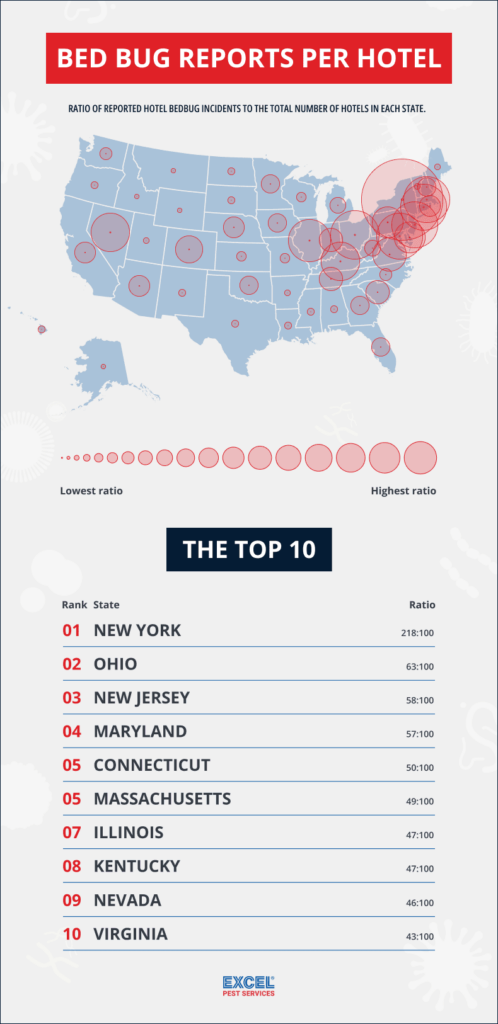
Bed Bug and Infestation Prevention for Hotels
What’s the best way to prevent a bed bug infestation in a hotel?
Prevention is better than cure! Preventing a bed bug infestation in a hotel requires a proactive and comprehensive approach. Here are some effective measures that hotels can take to prevent bed bugs:
- Education and Training: Hotel staff should receive proper training on bed bug awareness, identification, and prevention. They should be knowledgeable about the signs of infestation and understand the importance of early detection.
- Regular Inspections: Conduct regular inspections of guest rooms, including mattresses, box springs, bed frames, headboards, and upholstered furniture. Look for signs of bed bugs, such as live bugs, shed skins, fecal stains, or bloodstains. Promptly address any signs of infestation.
- Encasement of Mattresses and Box Springs: Consider using bed bug-proof encasements for mattresses and box springs. These encasements create a barrier that prevents bed bugs from infesting these areas, making detection and treatment easier if an infestation occurs.
- Proper Cleaning and Maintenance: Maintain a high standard of cleanliness in guest rooms and throughout the hotel. Vacuum mattresses, upholstery, and carpeting regularly to remove any potential hiding places for bed bugs. Pay attention to cracks, crevices, and seams where bed bugs may hide.
- Laundering Procedures: Implement effective laundering procedures for bedding, including sheets, pillowcases, blankets, and mattress protectors. Use high heat settings during washing and drying to kill any bed bugs or eggs that may be present.
- Guest Awareness: Educate guests about bed bug prevention and awareness. Provide information in the form of brochures or signage in guest rooms, informing them about the signs to look for and what to do if they suspect a bed bug infestation.
- Response to Guest Reports: Take any reports or complaints from guests regarding bed bugs seriously. Respond promptly and investigate thoroughly. If an infestation is confirmed, take immediate action to address the issue and mitigate the spread of bed bugs to other areas.
- Collaboration with Pest Control Professionals: Establish a relationship with a reputable pest control company that specializes in bed bug management. Regularly schedule inspections and treatments as a preventive measure to detect and address any potential infestations early on.
By implementing these prevention strategies, hotels can significantly reduce the risk of bed bug infestations and provide a safe and comfortable environment for their guests.
Does my hotel have a bed bug infestation?
Signs of a bed bug infestation can vary, but there are some common indicators to always look out for:
- Presence of bed bugs: Bed bugs themselves can be visible even though they are miniscule, you just have to look out for them. However they are particularly noticeable in advanced infestations.
- Bloodstains on sheets and mattress: After feeding, bed bugs may leave behind small bloodstains on your bedding or pajamas. These stains can appear as small reddish or rust-colored spots.
- Dark Fecal Stains: Bed bugs leave behind dark, ink-like stains on mattresses, bedding, or nearby furniture. These stains are composed of digested blood and are often found in clusters or along mattress seams.
- Bed Bug Eggs and Eggshells: Bed bugs reproduce rapidly, and their eggs are tiny, about the size of a pinhead. Look for translucent or pearly white eggs or empty eggshells in crevices, mattress seams, or other hiding places.
- Musty Odor: Bed bugs release pheromones, which can result in a distinctive musty odor. If you notice an unpleasant, sweet, or musty smell in your bedroom or surrounding areas, it could be a sign of a bed bug infestation.
- Presence of Exoskeletons: As bed bugs grow, they shed their exoskeletons. Finding discarded exoskeletons in areas where bed bugs are likely to hide, such as crevices, mattress seams, or behind furniture, suggests an infestation.
Of course, if you are a hotel manager or owner and your guests are complaining about bites, or you are a guest in a hotel and have woken up with itchy, red bites in a pattern or cluster on your skin, this is a sign of bed bugs. Bed bug bites often present in clusters on exposed areas of skin, such as the arms, legs, neck, or face.
It's important to note that not all individuals react to bed bug bites, and some signs may not be immediately apparent. If you suspect a bed bug infestation, it is advisable to seek professional pest control assistance for proper identification and effective treatment.
How to get rid of bed bugs in hotels?
Bed bug infestations in hotels can be detrimental to guest satisfaction and a hotel's reputation. These elusive pests are skilled hitchhikers, easily transported through luggage, clothing, and other personal belongings.
To protect guests and maintain a clean, pest-free environment, hotels must promptly and thoroughly address bed bug infestations. Below, we take a look at effective strategies to help hotels get rid of bed bugs and prevent their return.
- Identification and Inspection: The first step in eliminating bed bugs is accurate identification. Train hotel staff to recognize the signs of bed bug infestations, such as live bugs, molted skins, fecal stains, and eggs. Conduct regular inspections of guest rooms, common areas, and staff quarters using a combination of visual inspections, and monitoring devices.
- Isolation and Containment: If a room is suspected or confirmed to have bed bugs, immediately remove it from service. Seal the room to prevent the spread of bed bugs to other areas. Install door sweeps, weather stripping, and caulk gaps to deny bed bugs entry or escape routes.
- Professional Pest Control: Engage a licensed pest control professional experienced in bed bug eradication. The expertise and specialized treatments offered by professionals are crucial for effective elimination. Consider integrated pest management (IPM) techniques. IPM, is an environmentally-friendly and risk-averse approach to pest control. The aim of IPM is to eradicate pests while limiting pesticide use and posing the least possible danger to people, pets, property, and the environment. It utilizes the most up-to-date scientific knowledge about pests and how they interact with their surroundings. This information is used in conjunction with common-sense practices to provide the most economically effective and least hazardous pest management possible. IPM eliminates the pests as well as the environmental conditions that allow them to thrive.
- Thorough Treatment: Coordinate with the pest control professional to develop a comprehensive treatment plan tailored to the hotel's specific needs. Treat all affected areas, including mattresses, box springs, bed frames, furniture, carpets, curtains, and cracks and crevices. Follow the recommended protocols for pesticide application, ensuring the safety of guests and staff.
- Laundering and Heat Treatment: Remove and launder all bedding, linens, and curtains from infested rooms using hot water and high heat drying cycles. Consider heat treatments for infested items that cannot be laundered, such as upholstered furniture and mattresses, to kill bed bugs and their eggs.
- Staff Training and Awareness: Educate hotel staff about bed bug prevention, identification, and reporting protocols. Encourage them to report any signs of bed bugs promptly to facilitate early intervention. Implement a clear communication system between housekeeping, maintenance, and management to address infestations effectively.
- Ongoing Monitoring and Prevention: Regularly inspect and monitor rooms, especially those with a history of infestations, to detect and address bed bugs early. Encourage guests to report any suspicious bites or signs of bed bugs during their stay. Implement preventive measures, such as mattress encasements, bed bug interceptors, and regular deep cleaning, to minimize the risk of infestations.
- Guest Communication: Maintain transparency with guests regarding the hotel's proactive approach to bed bug management. Display educational materials in rooms, informing guests about the signs of bed bugs and what to do if they suspect an infestation. Address guest concerns promptly and offer alternative accommodations if necessary.
Eliminating bed bugs in hotels requires a combination of professional expertise, vigilant monitoring, and proactive prevention measures.
By promptly identifying and treating infestations, implementing preventive strategies, and maintaining open communication with guests, hotels can successfully eradicate bed bugs and provide a safe, comfortable environment for their guests. Remember, seeking professional assistance is essential to ensure effective bed bug elimination in a hotel setting.
Bed Bug Prevention Tips for Hotel Guests
If you have recently stayed at a hotel and are worried about possible bed bug encounters or are preparing for a hotel stay and want to be aware of potential bed bugs, here are some tips to help you identify them accurately.
How to avoid bed bugs in hotels
When visiting a hotel, you want to “sleep tight” and you certainly don’t want the bed bugs to bite. So, we have put together some tips to help you prevent encounters with these tiny, blood sucking creatures.
Prevention is always better than cure! Let’s take a look at some top tips for hotel guests:
- Inspect your hotel bed: When entering your hotel room, take a moment to inspect the entire area. Begin by examining the bedding, and make sure to check out the mattress seams, pillows and sheets for any signs of bed bugs. This includes tiny spots of blood, miniscule droppings and of course, bed bugs themselves.
- Inspect your hotel furniture and upholstery: When inspecting your room, don’t forget to pay attention to chairs, couches and even headboards. Just because they are called “bed bugs” doesn’t mean the elusive creatures are only confined to beds. Look for any small brownish spots or live bugs crawling around the upholstery.
- Keep your luggage away from the bed: In order to prevent bed bugs from catching a ride on your bags and belongings, keep your luggage on a luggage rack or store it in the bathroom - away from any beds and furniture. This is because bed bugs are attracted to these warmer areas in the room.
- Use protective sheets and covers: Consider using bed-bug proof covers for your hotel mattress and even box springs. These can help prevent bed bugs from getting into any crevices - and makes it easier to spot for any sign of infestation in your hotel.
- Keep clothes off the floor: Always avoid dropping your clothes on your hotel room floor or even using drawers. Rather, make use of hooks and hangers or simply use your luggage as a drawer and store it away in your cupboards or on the luggage rack.
- Report concerns immediately: if you notice any signs of bed bugs in your hotel, inform the hotel staff immediately. Also request a new room or seek alternative accommodation to avoid health risks.
- Launder clothes properly: When returning home from your hotel stay, make sure to wash all of your clothes - even those you did not wear. Make sure to wash them in hot water as high temperatures eliminate any potential bed bugs that may have hitched a ride in your luggage.
- Inspect and vacuum luggage: When you arrive home after your hotel stay, vacuum your luggage and pay attention to seams and pockets. Once this has been done, throw out your vacuum bag in a sealed plastic bag to prevent any possible bugs from escaping into your home.
- Stay alert at home: Once home, keep vigilant. Even after taking every precaution during your hotel stay, it is important to regularly inspect your bedding, upholstery and furniture for any signs of bed bugs - and if you notice any of these creatures in your home - take immediate action and contact an experienced pest control company.
By following these tips, you can reduce the risk of encountering bed bugs during your hotel stays and minimize the chances of bringing them back to your home.
How to spot a bed bug bite?
Spotting bed bug bites can be challenging as their appearance can vary from person to person. However, here are some general characteristics that may help identify bed bug bites:
- Red, Itchy Bumps: Bed bug bites often appear as red, raised bumps on the skin. They can be itchy and may resemble mosquito bites or small welts.
- Bite Patterns: Bed bug bites tend to occur in groups or clusters, often in a line or zigzag pattern. This is because bed bugs typically feed multiple times during a single feeding session, resulting in a series of bites close together.
- Exposed Areas of Skin: Bed bugs typically bite areas of the body that are exposed during sleep, such as the face, neck, arms, and legs. However, they can bite any area of the body, depending on the positioning during sleep.
- Delayed Reaction: In some cases, the symptoms of bed bug bites may not appear immediately. It can take a few hours to several days for the bites to become visible and cause itching or discomfort.
- Absence of a Bite Mark: It's important to note that not everyone reacts to bed bug bites. Some individuals may not exhibit any visible signs or experience itching at all, while others may have a strong reaction.
To confirm whether the bites are from bed bugs, it's essential to look for additional signs of infestation, such as live bugs, fecal stains, or shed skins in the vicinity. If you suspect a bed bug infestation in your home after a hotel stay, it is recommended to seek professional help from a pest control specialist to properly identify and address the issue.
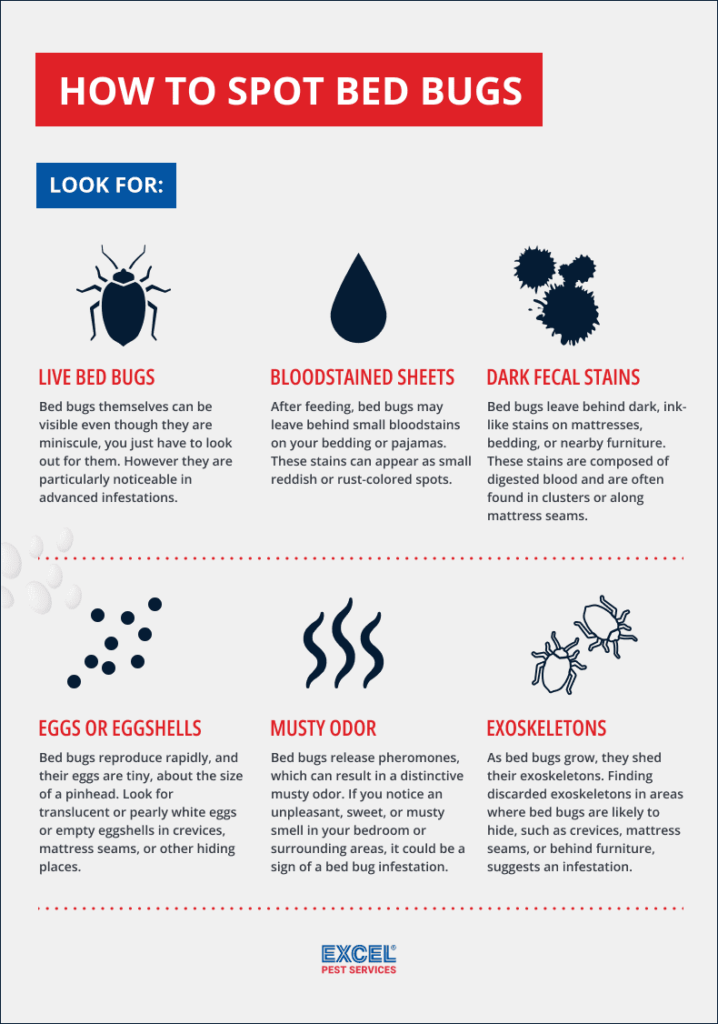
Expert pest control for hotels
Working with a pest control company
Pest infestations and bed bugs can quickly tarnish a hotel's reputation and negatively impact guest experience. By collaborating with an experienced pest control company, hotels gain access to expertise and specialized knowledge in pest identification, prevention, and elimination.
Excel Pest Services specializes in pest control solutions for hotels and the hospitality industry. Their approach involves a tailored strategy to address the unique needs of each hotel.
Excel Pest Services for Hotels:
- Inspection and Assessment: Excel Pest Services conducts a thorough inspection of the hotel premises to identify existing pest issues, potential problem areas, and factors contributing to pest infestations. They assess the specific needs and vulnerabilities of the hotel, considering factors such as the property's layout, common areas, guest rooms, food service areas, and external surroundings to ensure the best possible results.
- Customized Pest Management Plan: Based on the findings from the inspection, Excel Pest Services will go on to develop a fully customized pest management plan designed to the hotel's requirements. This plan takes into account the specific pest threats present, the hotel's unique layout and operations, and any legal and regulatory requirements.
- Integrated Pest Management (IPM) Approach: Excel Pest Services also offers an Integrated Pest Management approach, which emphasizes a combination of proactive prevention, monitoring, and targeted treatment methods. They prioritize non-chemical and environmentally-friendly solutions whenever possible, minimizing the use of pesticides while effectively managing pests.
- Ongoing Monitoring and Prevention: The Excel Pest professionals maintain regular monitoring schedules to proactively identify and address any emerging pest issues. They establish comprehensive pest control measures to prevent infestations, including sealing entry points, installing traps and monitors, and implementing sanitation and hygiene practices.
- Responsive Treatment and Emergency Services: In the event of a pest infestation, Excel Pest Services responds promptly to resolve the issue. Their experienced technicians use appropriate treatment methods, such as targeted insecticide application, trapping, or heat treatments, depending on the specific pest problem. They also offer emergency services to quickly address urgent pest control needs.
- Documentation and Reporting: As skilled professionals, the Excel Pest Services team maintains detailed documentation of all pest control activities in the hotel, including inspections, treatments, and recommendations. They provide comprehensive reports to hotel management, keeping them informed about the pest control measures implemented and offering guidance for ongoing prevention.
- Training and Education: Prevention is better than cure and Excel Pest Services recognizes the importance of educating hotel staff about pest prevention practices. They provide training sessions and educational materials to raise awareness and ensure that hotel employees are equipped with the knowledge and skills to identify early signs of pest activity and implement preventive measures.
By working closely with hotels and implementing a holistic approach to pest management, Excel Pest Services aims to create and maintain a bed bug and pest-free environment, protecting the reputation and guest satisfaction of the hotel. Whether you require residential pest control for your home or commercial pest control services for your hotel or business, contact us today to discuss how we can ensure a pest-free environment tailored to your specific needs.




